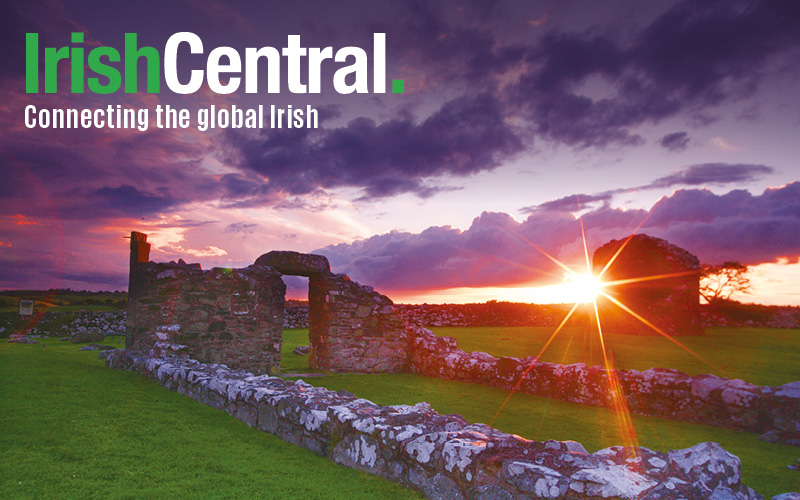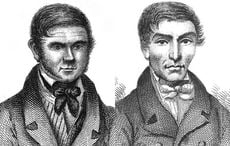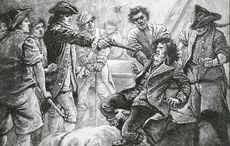March 2016 marks a milestone for Irish genealogy. Ten million Irish Catholic parish register records spanning the years 1670 – 1900 are now fully indexed and searchable online and will be free to access forever from genealogy hub Findmypast.
The parish register records are among the most crucial for anyone tracing their Irish ancestry. In many cases, these local baptism and marriage records are the only documented trail for descendants to explore since the Irish Censuses of 1821, 1831, 1841, and 1851 were burned in the Public Records Office when the Four Courts caught fire during the Irish Civil War.
The records released today contain 40 million names, cover 1,000 parishes across all 32 counties of Ireland, and form the most important resource for Irish ancestors prior to the 1901 census, allowing researchers to trace their roots back to pre-Famine Ireland.
These are the same records that were released online for free to wide applause by the National Library of Ireland at the end of 2014, except there’s one major difference. While the NLI’s Catholic Parish Registers database is fully digitized and searchable by parish, it isn’t indexed or searchable by other criteria such as name.
Findmypast’s offering marks the first time that National Library of Ireland’s collection of Irish Catholic Registers has been fully indexed with images to the original documents linked online. The records can now be searched by name, year and place, allowing relatives and historians the opportunity to make all important links between generations with the baptism records and between families with the marriage registers.
This ease of access will be a complete game changer in the search for one’s Irish ancestors.
For many decades, gaining access to parish records involved a trip to Ireland and, in some cases, a visit to the parish in question, where a priest, a nun or an official from the parish office would be the gatekeeper to the records.
The Irish American writer Mary Pat Kelly, who is the author of two acclaimed novels inspired by what she discovered about her Irish ancestors, Galway Bay and Of Irish Blood, recently recalled her experience trying to trace her roots in the ‘90s.
“I had spent 40 years trying to find out where my Kelly ancestors came from. I had a general idea of Galway but nothing specific - I had no maiden names, and Kelly is the second most common surname in Ireland. Finally my cousin in her 90s, who was also a nun, she told me my great-great-grandmother Honora’s maiden name was Keeley," she told IrishCentral.
“This was in the ‘90s when they had most of the records at family history centers in each county –digitized, but not online. So I did find Honora Kelly Keeley’s birth certificate and those of her children, but I was still having trouble finding her husband, Michael J. Kelly.”
It ultimately took a trip to the Presentation Convent in Galway, where a venerable sister with extensive knowledge of the records agreed to help after Kelly bonded with her over having been a novitiate in a convent for six years.
Together they tracked down Kelly’s great-great-grandfather, Michael Kelly, discovering that he had married Honora in 1839, and the sister would go on to help many other people navigate the records.
“After that I sent dozens of people to her” Kelly said. “She’s met some of them at the train station, she’s gone up to Dublin to check in the land commission records for people, and now she’s also a wiz on computers. She feels it’s her apostolate to help people find their ancestors, to connect people.”
While genealogists and people who know the parish records like the backs of their own hands will always be invaluable, the full indexing of these once hard to navigate records will make it significantly easier for people to get started on their Irish ancestor search independently, and without the financial or time commitment it once required.
“This important publication marks a further step in Findmypast’s commitment to making Irish family history more accessible. In less than 5 years, we have made over 110 million records (with 300 million names) available online for the first time,” Brian Donovan, Irish records expert at Findmypast, told IrishCentral.
“Irish research has been transformed from the select pursuit of the few, to a fun and relatively easy hobby for the many. The Irish story of hardship, migration and opportunity is a global story, and in partnership with the cultural institutions around the world we are bringing the fragments of their lives within reach.”
He noted that there have been “various indexing attempts over the years but they were done by local bodies and were sometimes expensive to access. These records are free and forever and accessible from a computer. That was important to us with a release of this magnitude – we feel that Irish family history can be made easy and we know how popular it is.”
For those setting out to trace their ancestry for the first time, Donovan recommends getting as much information in advance as possible, be it from family members or from the paper trail their relatives created after immigrating to the US.
“People assume that because Ireland is so small that finding their ancestors will be easy, but they forget that before the famine there were 8 million people in Ireland – that’s a bigger population than any state in the US at that time,” he explained.
The Catholic Parish Registers will be particularly valuable for people who have filled in their ancestors’ lives post-immigration from Ireland but are still looking for answers to their family’s past on the Emerald Isle.
“One of our core ambitions is to make the link between Europe and North America that much easier, and these records are a key part of that link,” Donovan added. “We have far more Irish records than anyone else, and in addition to birth, death and marriage records, we have historic newspaper archives, petty court records, dog license applications and loads more besides that that allow people to form fuller stories of who their ancestors were.”
On an important historical note, the indexing of the parish records also allow researchers to witness the devastating effects of Ireland’s Great Hunger (1845-1852) first hand. Using the records to examine baptism rates in pre and post Famine Ireland revealed that the number of children baptised across the whole of Ireland dropped by more 50% in the decade that followed. Across all 32 counties, 2,408,694 baptisms were recorded from 1835-1844, while 1,109,062 baptisms were recorded between 1851 and 1860, a difference of more than 1,299,000 baptisms.
The records reveal the worst affected regions, with counties Limerick, Wexford, Roscommon and Kilkenny seeing the most dramatic drops in baptism rates.
---
Findmypast is home to the most comprehensive online collection of Irish family history records with millions of exclusive records, published in partnership with The National Archives of Ireland, The National Archives UK, and a host of other local, county and national archives.
*Originally published March 1, 2016




Comments